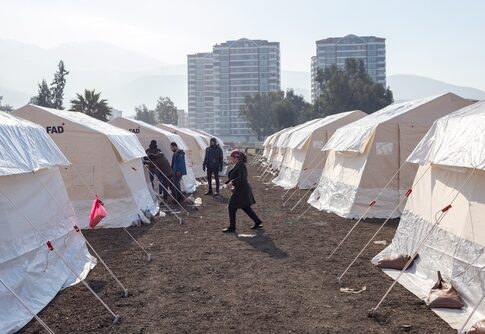Tehran faces an unprecedented water crisis threatening mass evacuation, a stark reflection of Iran’s broader governance failures.
Tehran’s Water Crisis Unfolds
Tehran, home to over 10 million residents, is on the verge of a water crisis unlike any in its history. The city has witnessed a staggering 100% reduction in precipitation compared to the previous year, an unprecedented situation that has left critical water reserves nearly depleted. Officials warn that if the dry spell continues without immediate rainfall, parts of the city could face forced evacuation within weeks, highlighting the urgency and severity of the situation.
IRAN: Tehran is facing an acute water emergency.
Historic drought and low rainfall have depleted reservoirs, prompting warnings from President Masoud Pezeshkian that the capital may need to be relocated.
The Amir Kabir Dam holds only 8 % of its capacity, leaving less than two… pic.twitter.com/qSrRshpQ0I
— Volcaholic 🌋 (@volcaholic1) November 6, 2025
The Amir Kabir Dam, once a vital water source for Tehran, now holds a mere 14 million cubic meters of water, just 8% of its capacity. This amount of water can sustain the city’s current needs for only about two weeks. Tehran relies heavily on five major dams, but collectively they are only 8% full. Excluding the Taleqan Dam, this figure drops to 5%, according to Mohsen Ardakani, head of Tehran’s Water and Wastewater Company.
Nationwide Implications
Tehran’s environmental crisis is symptomatic of a larger national emergency. Under President Masoud Pezeshkian’s administration, more than 2,000 people have been killed in just over a year, as the regime’s repressive grip tightens. The water crisis, coupled with political unrest, paints a dire picture of a nation struggling on multiple fronts. Tehran province received only 159 millimeters of rainfall in the last water year, the lowest in a century, with no measurable rain since September 23.
Current dam reserves have dropped drastically, from 420 million cubic meters in previous years to just 252 million. Weather forecasts predict no significant rainfall before December. Even with the utilization of underground aquifers, the situation remains critical, emphasizing the severity of the crisis as noted by Ardakani.
Government’s Response and the Public’s Plight
The Karaj Dam, another essential source of water, is at a mere 7% capacity. Clean water supplies may be exhausted within two weeks, according to Mehdi Maghsoudi, director of Karaj Water Affairs. President Pezeshkian acknowledged the dire circumstances, stating, “If it does not rain, we will have to start restricting water supplies in Tehran next month. If the drought continues, we will run out of water and be forced to evacuate the city.”
With Tehran consuming approximately three million cubic meters of water daily, the city is balancing on a razor’s edge. The convergence of severe drought, governmental failure, and authoritarian governance highlights a nation in peril, where both the land and its people are being drained dry. The urgency of the situation calls for immediate action and strategic planning to prevent a humanitarian and environmental catastrophe.
🇮🇷 Tehran’s water crisis just escalated.
President Pezeshkian warns the city may need to be evacuated if rain doesn’t arrive soon.Meteorological data show that precipitation in Tehran this year is about 40% below seasonal averages
The capital’s five main dams are nearly… pic.twitter.com/esaN24GZJW
— Info Connect (@infoconnectnow) November 7, 2025
Broader Consequences
The water crisis in Tehran is not an isolated incident but rather a reflection of broader systemic issues within Iran. The government’s inability to effectively manage resources and respond to environmental challenges exacerbates existing societal tensions. As the capital faces potential evacuation, the implications for Iran’s stability and governance are profound. This crisis serves as a critical reminder of the need for sustainable management practices and responsible governance to safeguard the future of the nation.
The convergence of environmental, political, and social pressures in Iran underscores the critical need for comprehensive solutions to address the nation’s challenges. With the capital of Tehran on the brink of a humanitarian disaster, the government’s response will be pivotal in determining the country’s future trajectory.
Sources:
Iran’s Despotic Government May Have To Evacuate Tehran Because Of Water Shortage

